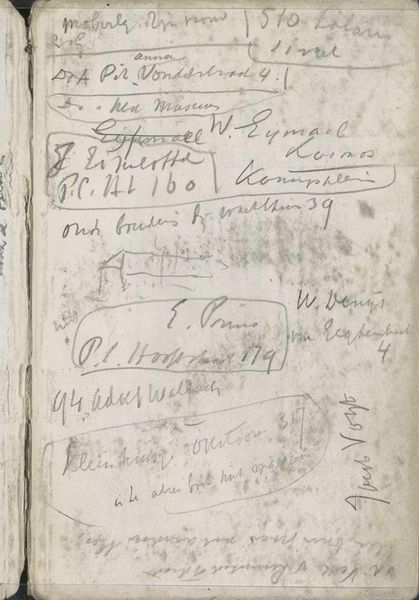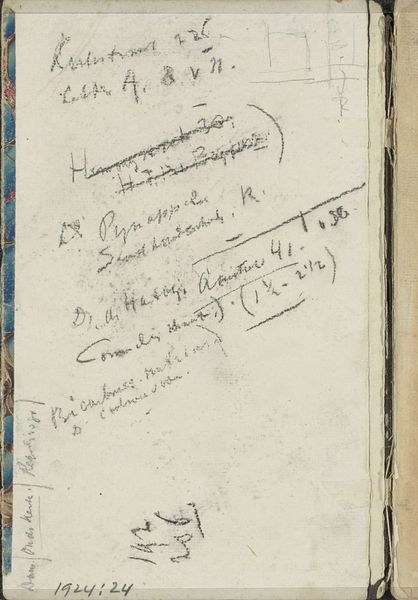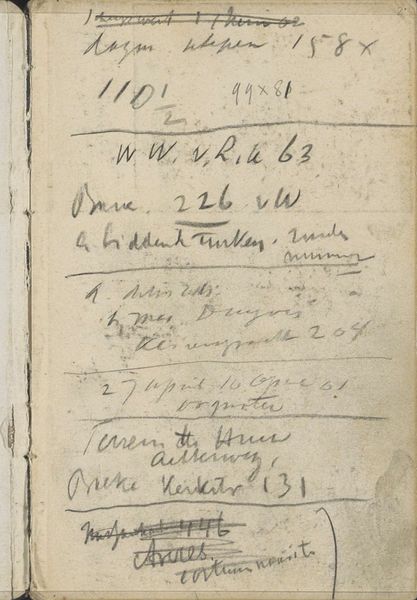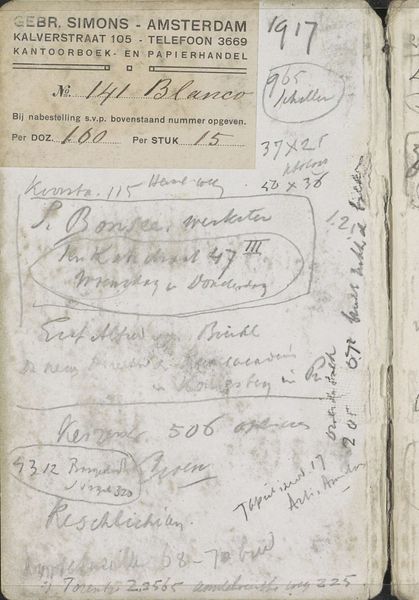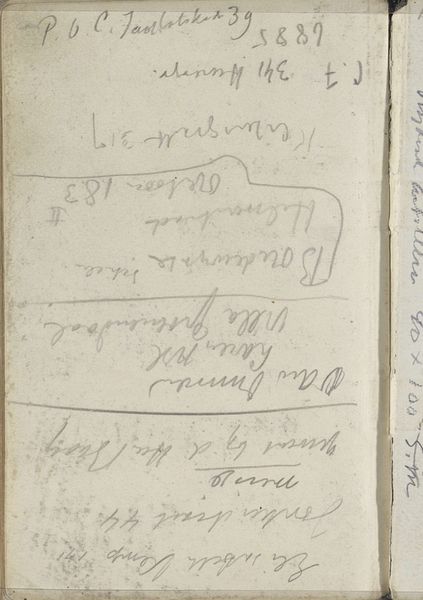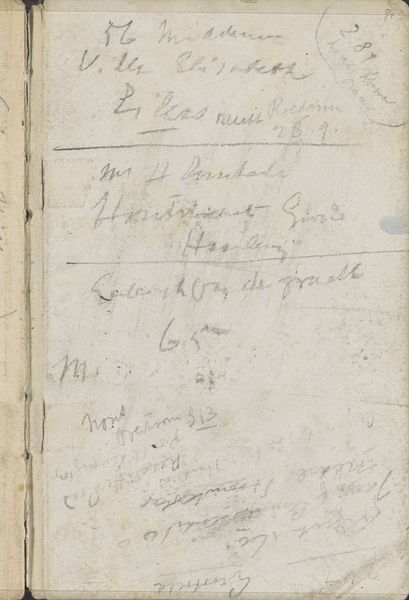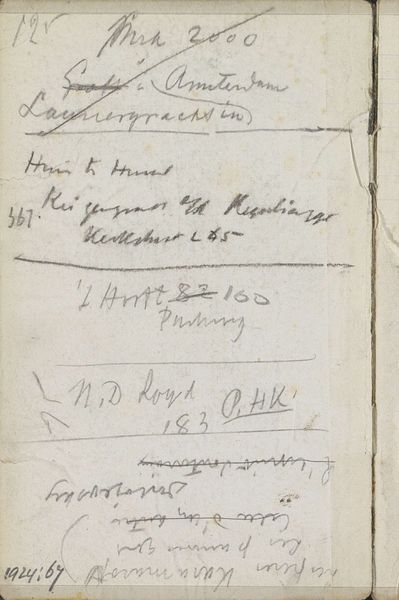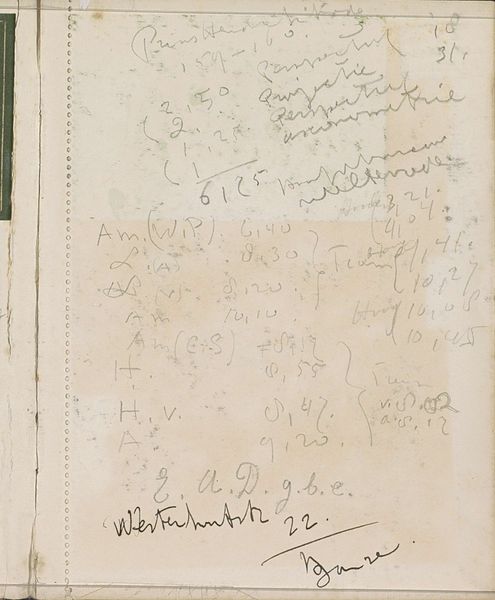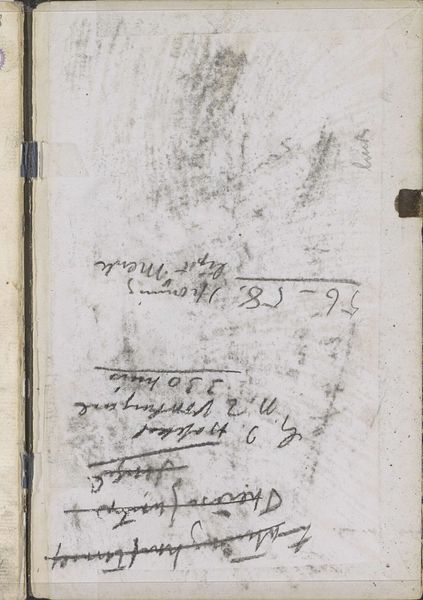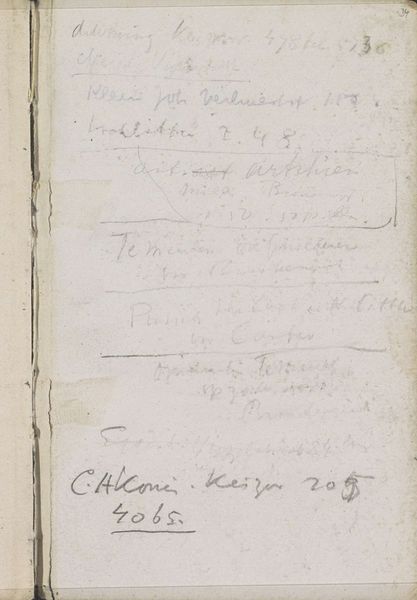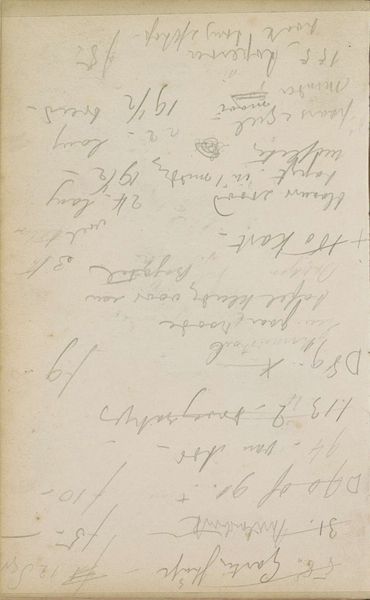
Copyright: Rijks Museum: Open Domain
Curator: Let's discuss "Annotaties," a drawing by George Hendrik Breitner, likely created between 1907 and 1911. It's an ink drawing on paper. What strikes you about it initially? Editor: I'm immediately drawn to the tactile quality of the marks. It feels so immediate, so much about the physical act of writing and drawing. The texture of the paper must have influenced the flow of ink. Curator: Indeed, there is something incredibly intimate about encountering an artist's sketchbook page like this. Sketchbooks allow us a look at what symbols, codes, and perhaps mundane notetaking felt relevant for Breitner's visual culture. Do you see any patterns emerge in the way the handwritten content is distributed? Editor: What's most compelling is the seeming lack of hierarchy. Names, times, directions – it all flows together. It’s as if Breitner saw the act of writing as simply another way of accumulating material, of processing the world through a direct and physical gesture. Curator: The effect almost renders language itself into a visual texture, a surface onto which memory and perception coalesce. And consider how commonplace textual notations can function almost as palimpsests—where over time a previous notation's symbolic value is completely forgotten! Editor: Precisely. I am particularly fascinated by how the materials—ink, paper, the hand itself—determine the artwork's qualities and invite the reader to experience an exchange of textual information, not as communicative in itself, but more so like pure form and tactile presence. Curator: The fading of the ink in some areas only amplifies the effect you're describing—time itself contributing to the work's materiality, eroding the clarity of the textual information as though it were made of vulnerable stuff! It raises such important questions about memory, intention, and chance. Editor: A nice convergence of substance, practice, and time. I really see that Breitner was concerned with production. Curator: A lovely material examination as seen through symbols and images from the past.
Comments
No comments
Be the first to comment and join the conversation on the ultimate creative platform.

